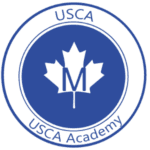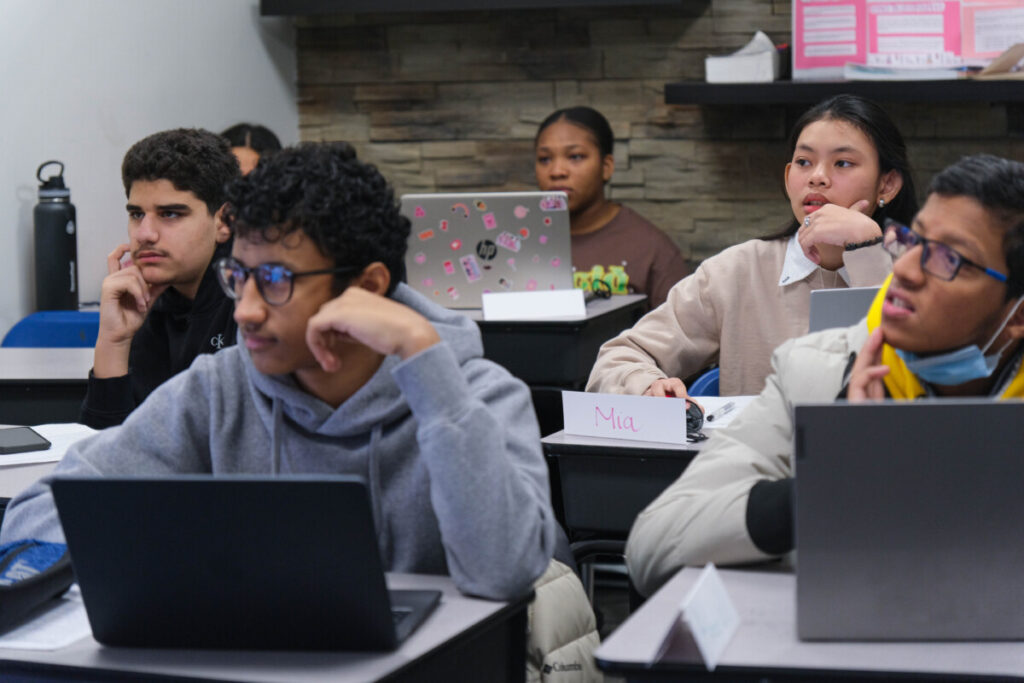| Course Type: | University Preparation |
| Credit Value: | 1.0 |
| Prerequisite: | Introduction to Computer Science, Grade 1, University Preparation, ICS3U |
Course Description
ICS4U – Computer Science (Grade 12) course helps students improve their grasp of computer science concepts and practices. Students will use modular design ideas to create advanced programs. They will ensure that their work meets industry standards. Collaborative projects play a key role in this course. In teams, students will plan, develop, and review a significant software project.
Furthermore, students will assess how effective algorithms are. They will also discuss important ethical issues in computing, as well as environmental concerns and new technologies. The course introduces interesting areas of research in computer science. It also provides insights into career possibilities in this field.
ICS4U gives students practical skills along with theoretical knowledge. This prepares them for further studies or careers in computer science and related fields.
Outline of Course Content
Unit
Titles and Descriptions
Time and Sequence
Unit 1
Designing Data Structures
In this unit, students review and extend their knowledge in data structures while focusing on implementation of projects to create and manipulate data constructs. Students apply fundamental fixed-size data structures (arrays, user-defined data types, records, arrays of records) to solutions to real-life problems and suggest possible implications of data storage on people’s lives in light of Canadian law. Students use independent study activity to further their mastery of new programming skills in preparation for postsecondary destinations. They also learn to select proper data structures that best match the information and promote program efficiency, code reusability, and maintenance. Students review and reinforce the principles of ergonomics and relate it to the rights of workers. They explore career opportunities in computing and information science related fields.
20 hours
Unit 2
Building software libraries
In Managing Software Projects students examine the components of a software project plan and develop a plan, in the context of case studies. They review the components of the software design life cycle and explore project management and team-building techniques. Students create a list of questions, pose the questions to a role-playing client, write a problem definition, analyse, design, implement and maintain a solution
20 hours
Unit 3
Exploring advanced algorithms
Students practice the re-use of code by building and sharing code libraries. The libraries are expanded in subsequent units. Students explore the differences between object-oriented and procedural programming as they apply to software libraries. Students also examine library design in the context of file management in network environments. They investigate intellectual property rights and code ownership and the ethics of code re-use by examining and analysing software-licensing agreements.
20 hours
Unit 4
Managing Software Projects
Students explore alternative algorithms for solving problems. They examine and program solutions to problems similar to those encountered in ICS3M (e.g., binary search or factorials), using new techniques such as recursion. They also plan solutions to more complex problems using industry-standard methodology (e.g., flow charts, pseudocode, structure charts). Students apply advanced algorithms, such as a recursive sort, to develop more efficient solutions to complex programming problems. Strategies for testing and debugging of programs are developed.
15 hours
Unit 5
Project Management and Software development skills
This unit is a culminating challenge in which students work to apply project-management skills, previously learned, to a case study. They plan, develop, test, and document a software solution to a given problem. Students apply complex programming techniques and utilize software libraries.
20 hours
Unit 6
Final Evaluation
The first product is a Project, subdivided into three distinct subsections and is worth 15% of the overall course marks. This Project will be evaluated using a marking scheme and a rubric. The second product will be a final exam of well-formulated multiple choice questions requiring information from the whole course.
10 hours
Total
110 hours
Computer Science Grade 12: When students are engaged in active and experiential learning, they tend to retain knowledge for longer periods and to develop, acquire, and integrate key skills more completely. Some of the teaching and learning strategies that are suitable to material taught in computer studies include:
Programming | Guided internet research | Direct Instructions |
Electronic Simulations | Discussion Groups | Program construction activities |
Interactive activities | Research projects | Model making |
Visuals | Multimedia presentations | Diagrams |
Problem solving | Discussion groups | Interviews |
Computer Science Grade 12:
Assessment is a systematic process of collecting information or evidence about a student’s progress towards meeting the learning expectations. Assessment is embedded in the instructional activities throughout a unit. The expectations for the assessment tasks are clearly articulated and the learning activity is planned to make that demonstration possible. This process of beginning with the end in mind helps to keep focus on the expectations of the course. The purpose of assessment is to gather the data or evidence and to provide meaningful feedback to the student about how to improve or sustain the performance in the course. Scaled criteria designed as rubrics are often used to help the student to recognize their level of achievement and to provide guidance on how to achieve the next level. Although assessment information can be gathered from a number of sources (the student himself, the student’s course mates, the teacher), evaluation is the responsibility of only the teacher. For evaluation is the process of making a judgment about the assessment information and determining the percentage grade or level.
Assessment is embedded within the instructional process throughout each unit rather than being an isolated event at the end. Often, the learning and assessment tasks are the same, with formative assessment provided throughout the unit. In every case, the desired demonstration of learning is articulated clearly and the learning activity is planned to make that demonstration possible. This process of beginning with the end in mind helps to keep focus on the expectations of the course as stated in the course guideline. The evaluations are expressed as a percentage based upon the levels of achievement.
A variety of strategies are used to allow students opportunities to attain the necessary skills for success in this course and at the post-secondary level of study. To facilitate learning, the teacher uses a variety of activities engaging the whole class, small groups, and individual students.
The assessment will be based on the following processes that take place in the classroom:
| Assessment FOR Learning | Assessment AS Learning | Assessment OF Learning |
|---|---|---|
During this process the teacher seeks information from the students in order to decide where the learners are and where they need to go. | During this process the teacher fosters the capacity of the students and establishes individual goals for success with each one of them. | During this process the teacher reports student’s results in accordance to established criteria to inform how well students are learning. |
| Conversation | Conversation | Conversation |
Classroom discussion Self-evaluation Peer assessment | Classroom discussion Small group discussion Post-lab conferences | Presentations of research Debates |
| Observation | Observation | Observation |
| Drama workshops (taking direction) Steps in problem solving | Group discussions | Presentations Group Presentations |
| Student Products | Student Products | Student Products |
| Reflection journals (to be kept throughout the duration of the course) Check Lists Success Criteria | Practice sheets Socrative quizzes | Projects Poster presentations Tests In Class Presentations |
Some of the approaches to teaching/learning include
Strategy | Purpose | Who | Assessment Tool |
Class discussion | Formative | Teacher/student | Observation Checklist |
Programming Exercises | Formative | Teacher | Rubric or marking scheme |
Daily class work | Formative | Teacher/student | Observation Checklist |
Assignments | Summative | Teacher | Rubric or marking scheme |
Written test | Summative | Student | Marking scheme |
Project | Formative | Teacher/student | Marking scheme |
Final written exam | Summative | Teacher/student | Marking scheme |
The evaluation of this course is based on the four Ministry of Education achievement categories of knowledge and understanding (25%), thinking (25%), communication (25%), and application (25%). The evaluation for this course is based on the student’s achievement of curriculum expectations and the demonstrated skills required for effective learning.
The percentage grade represents the quality of the student’s overall achievement of the expectations for the course and reflects the corresponding level of achievement as described in the achievement chart for the discipline.
A credit is granted and recorded for this course if the student’s grade is 50% or higher. The final grade for this course will be determined as follows:
- 70% of the grade will be based upon evaluations conducted throughout the course. This portion of the grade will reflect the student’s most consistent level of achievement throughout the course, although special consideration will be given to more recent evidence of achievement.
- 30% of the grade will be based on a final evaluation of two products administered at the end of the course. The first product is a Project, subdivided into three distinct subsections and is worth 15% of the overall course marks. This Project will be evaluated using a marking scheme and a rubric. The second product will be a final exam of well-formulated multiple choice questions requiring information from the whole course as well as the student’s reports completed through-out the course.


